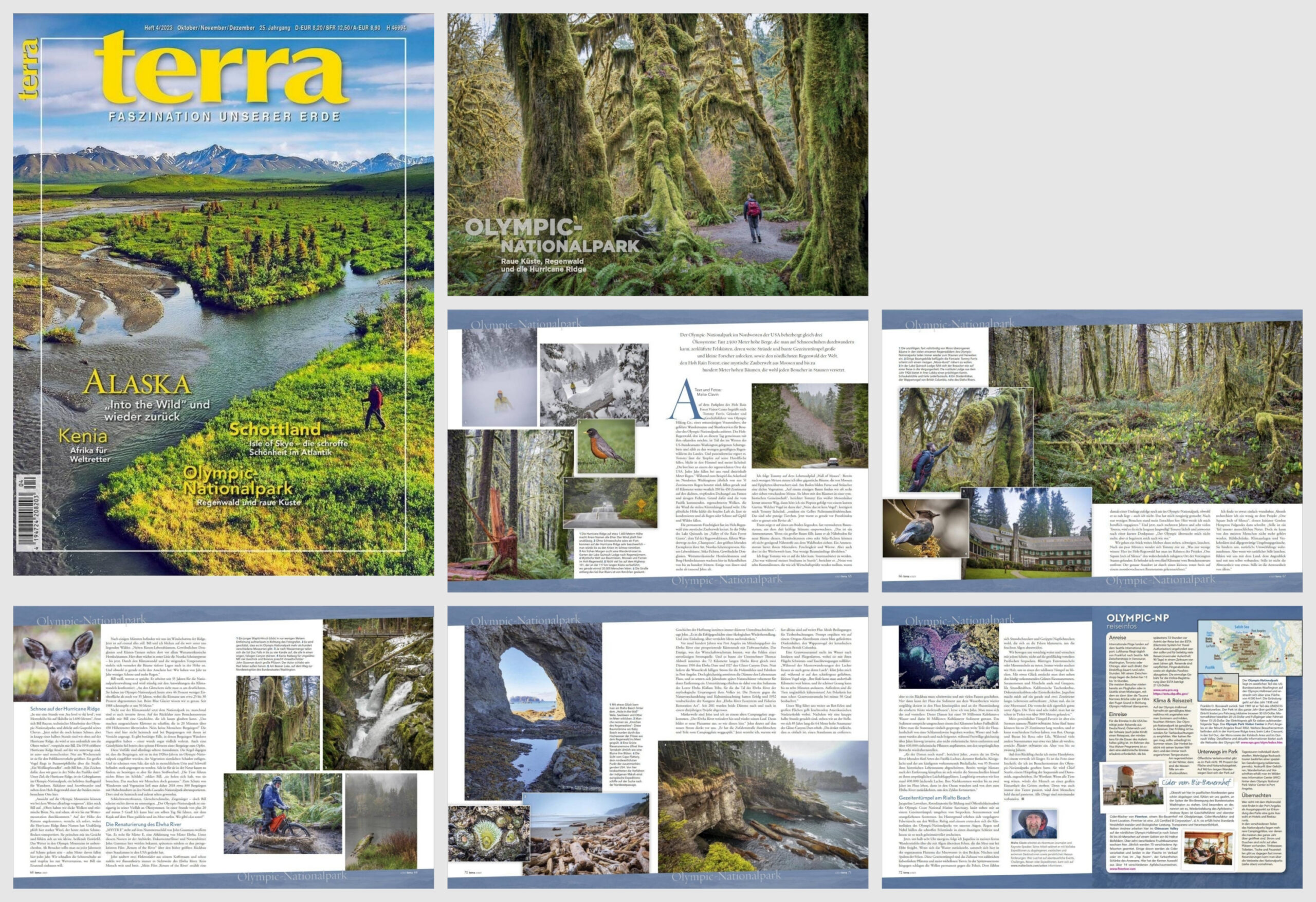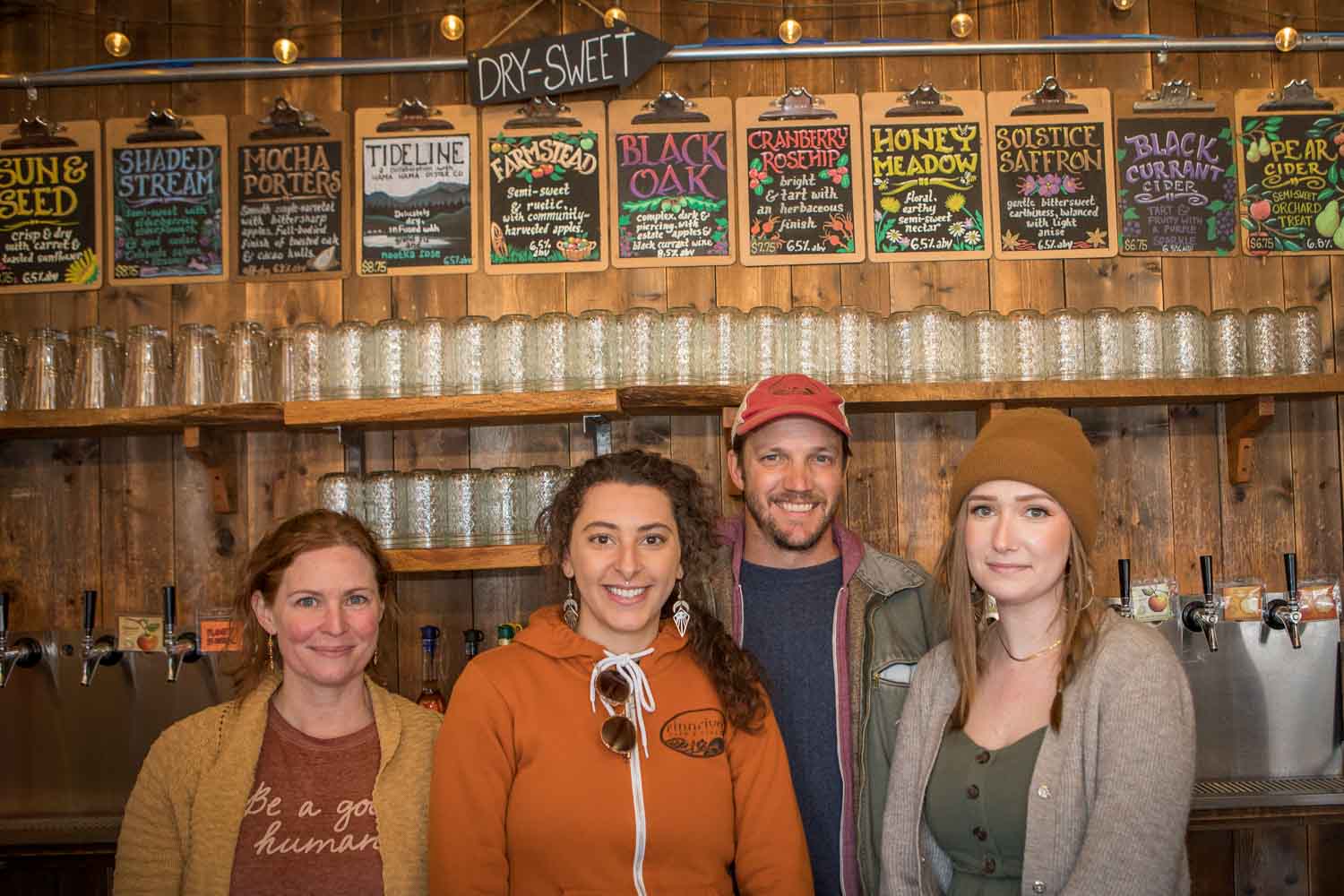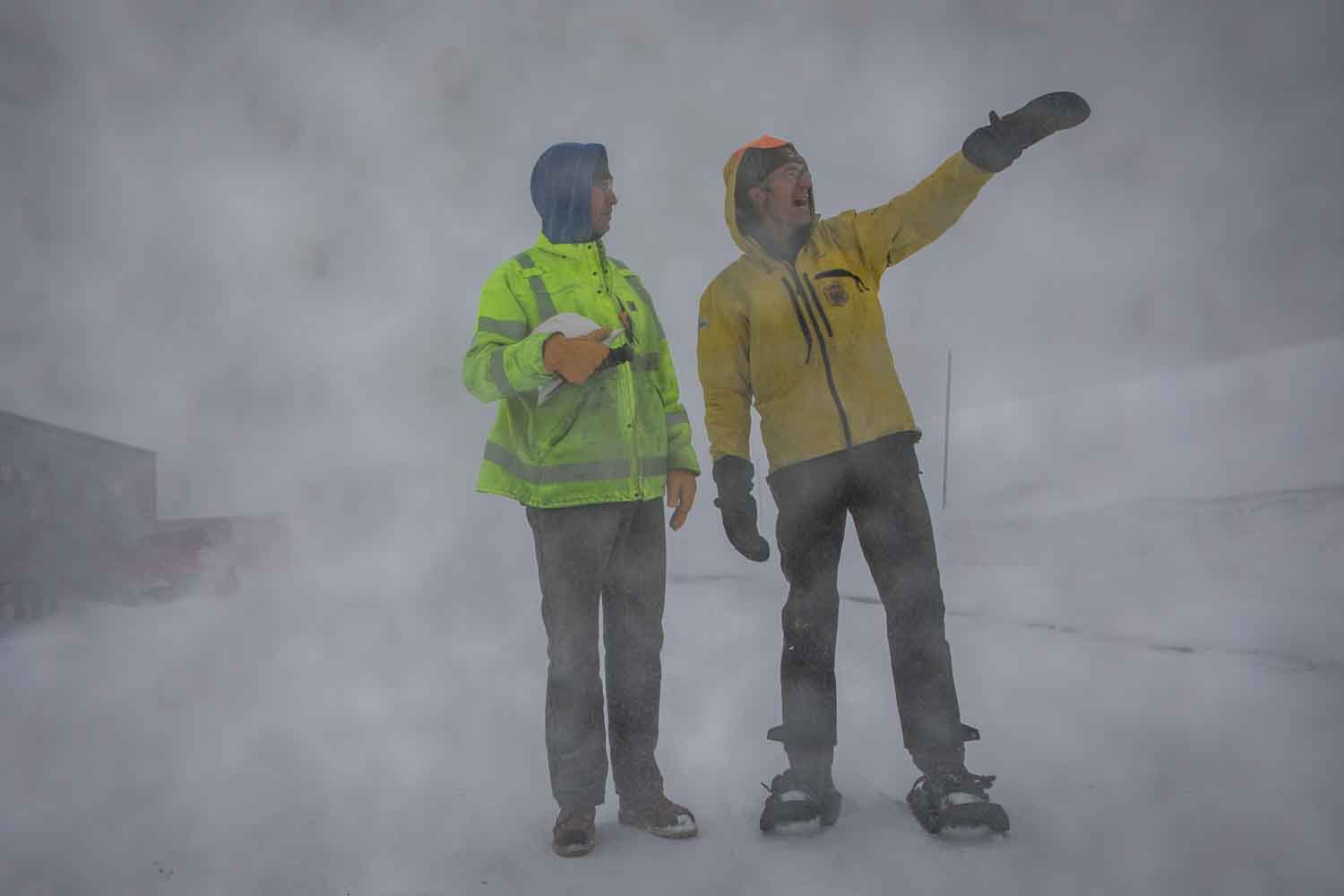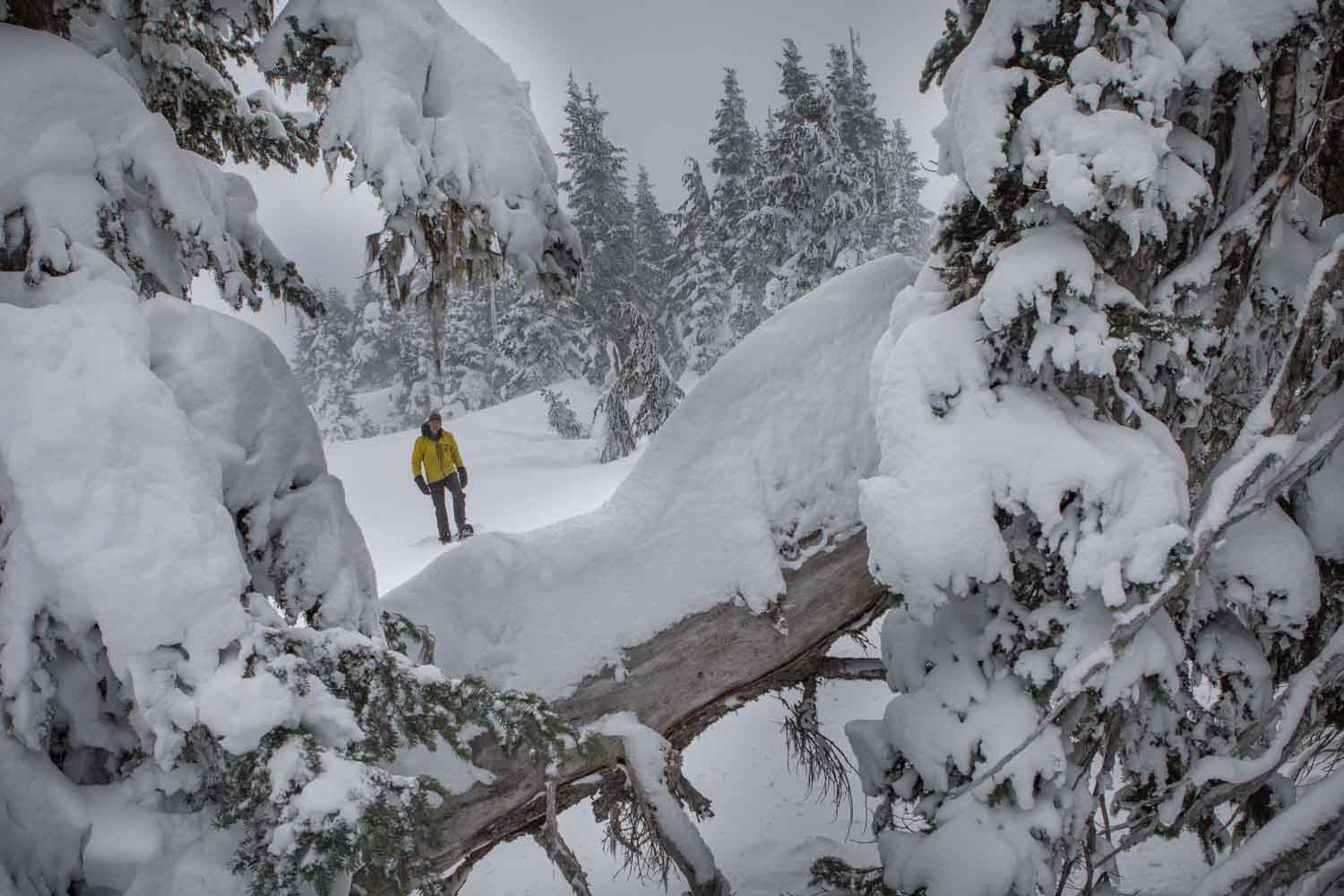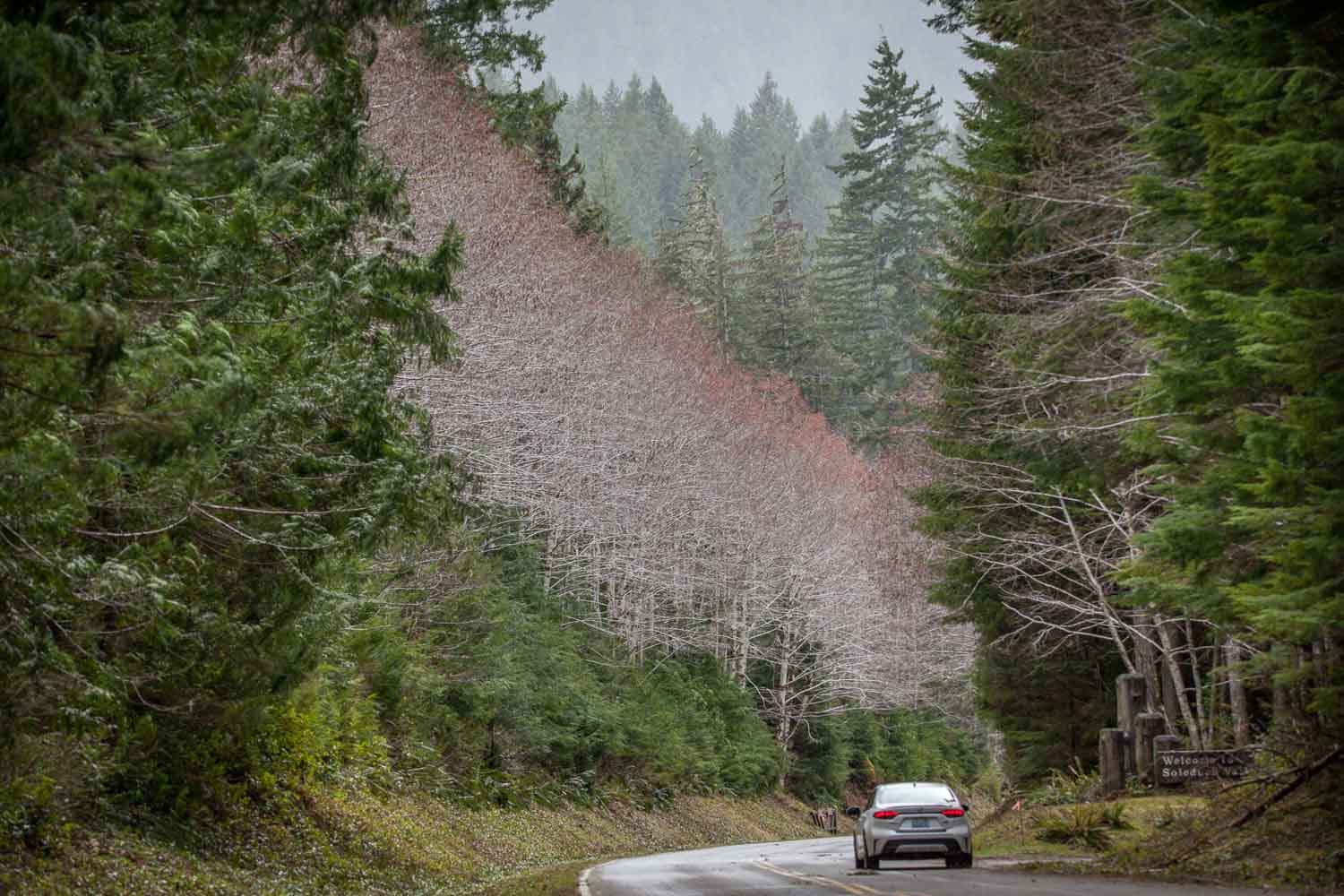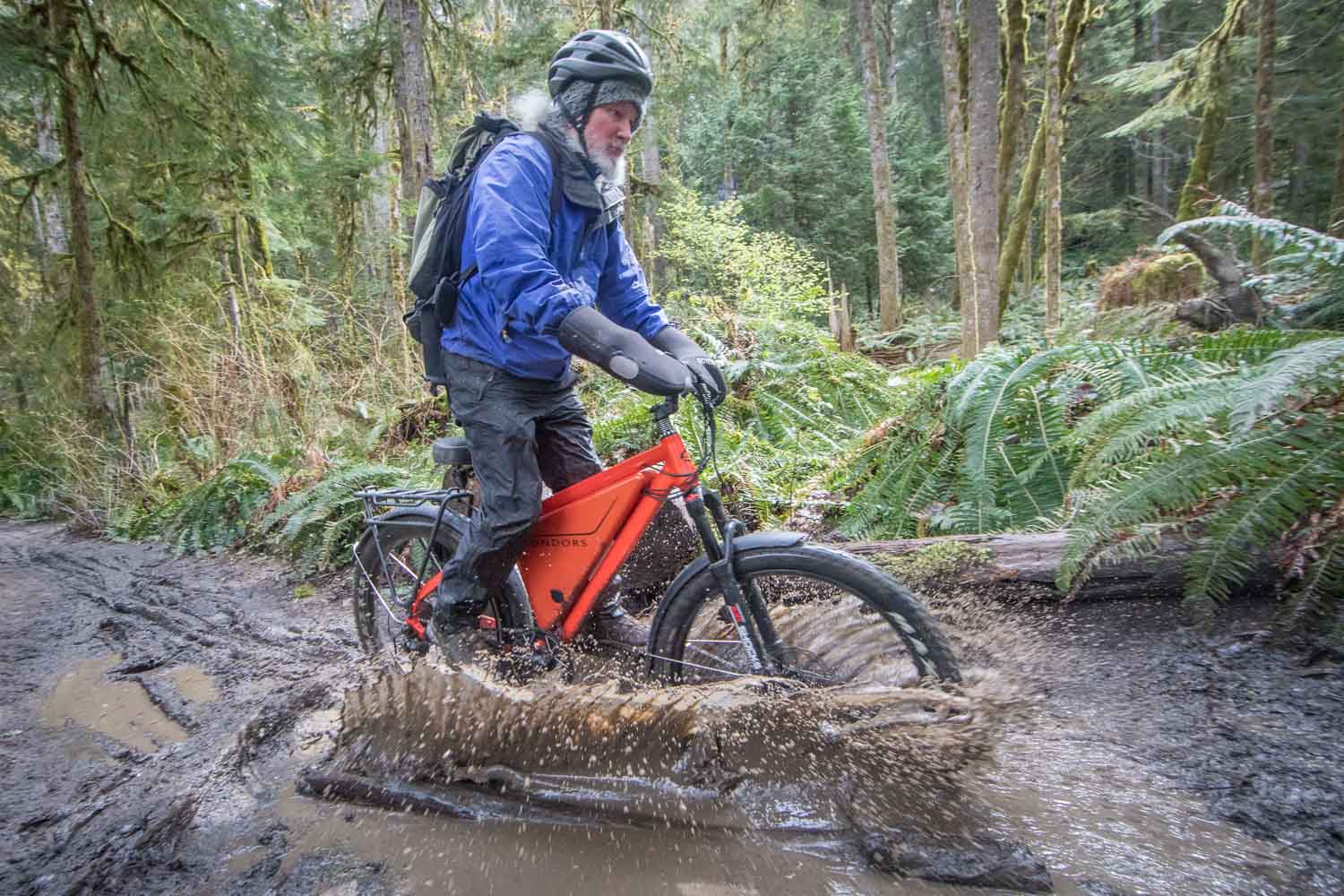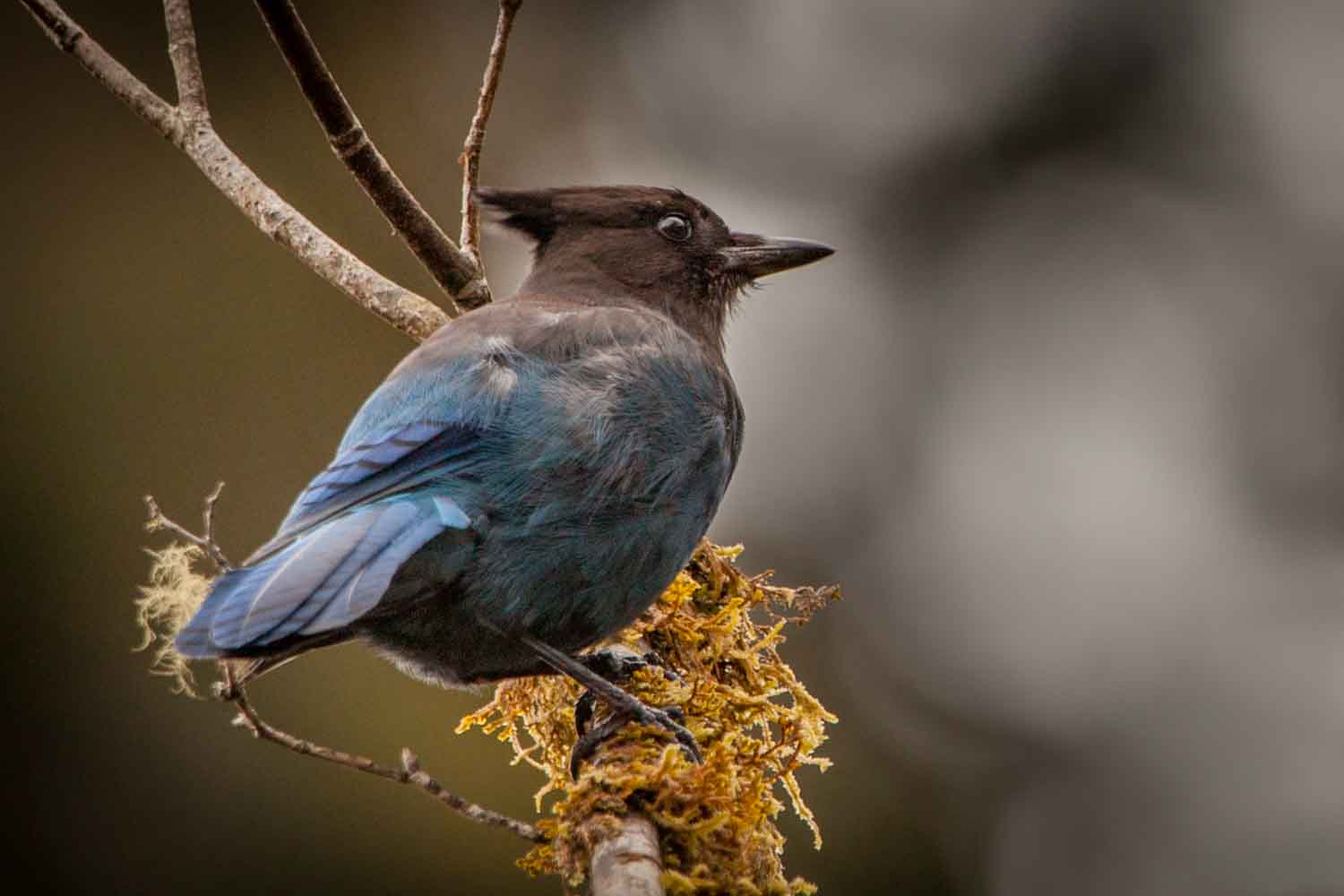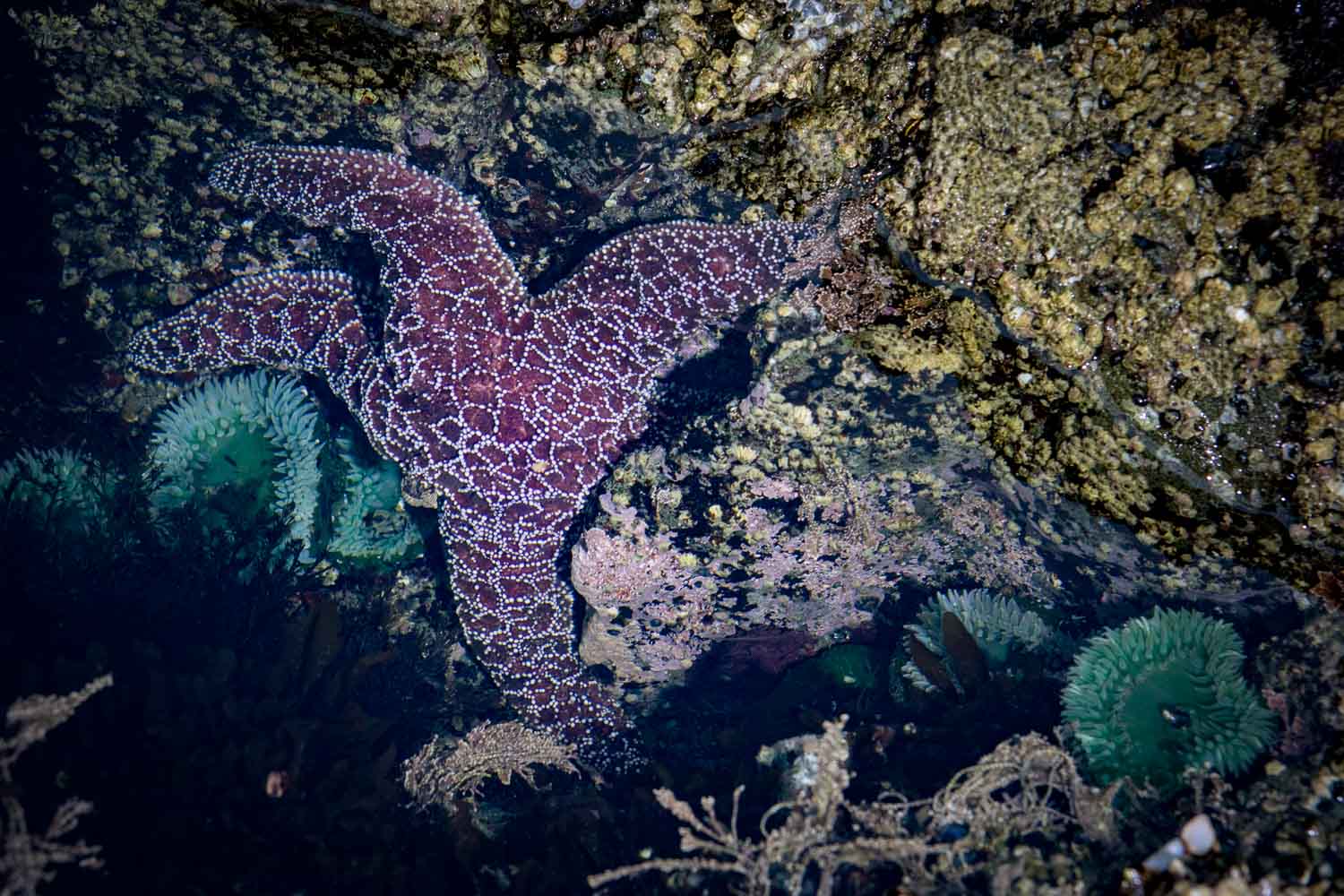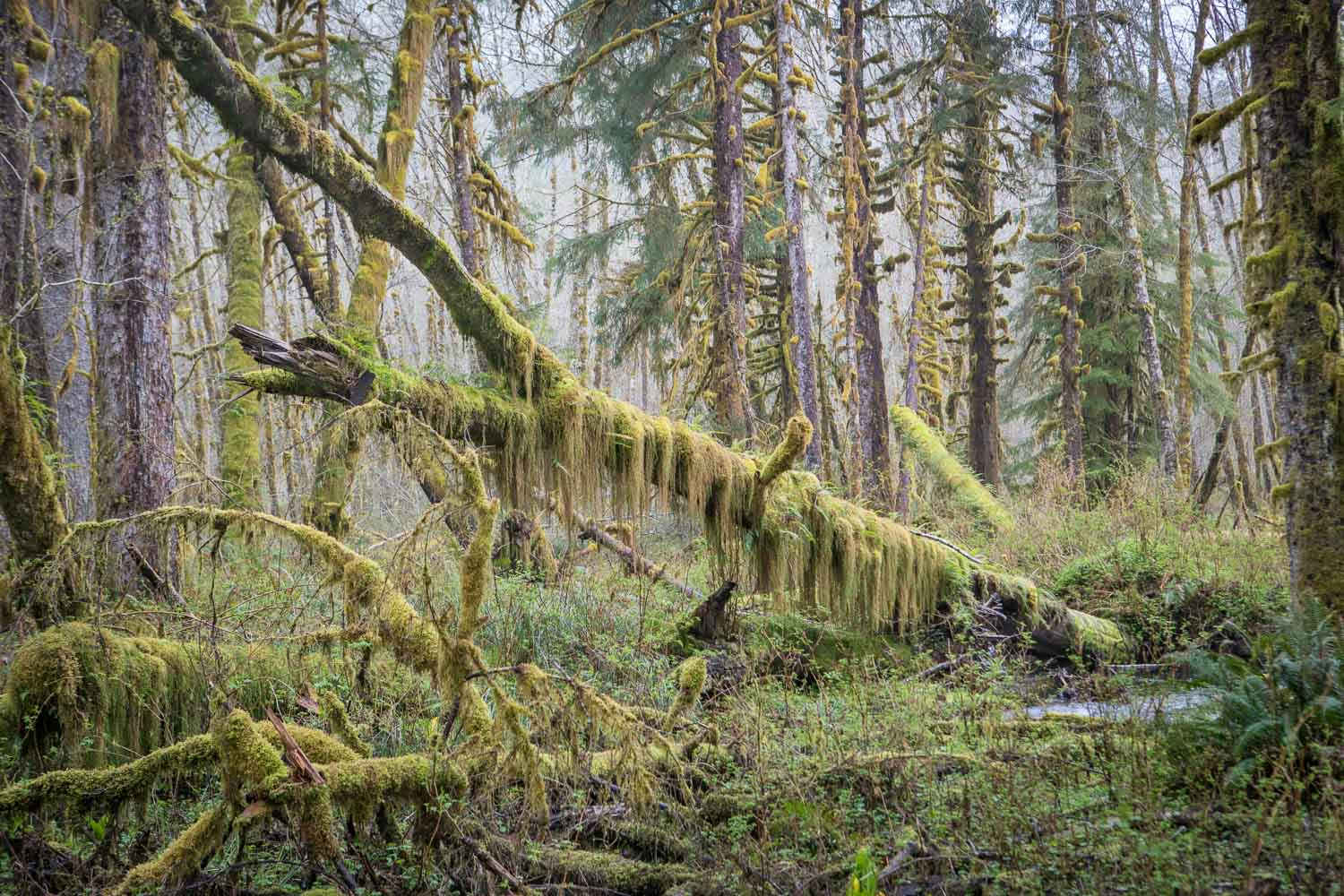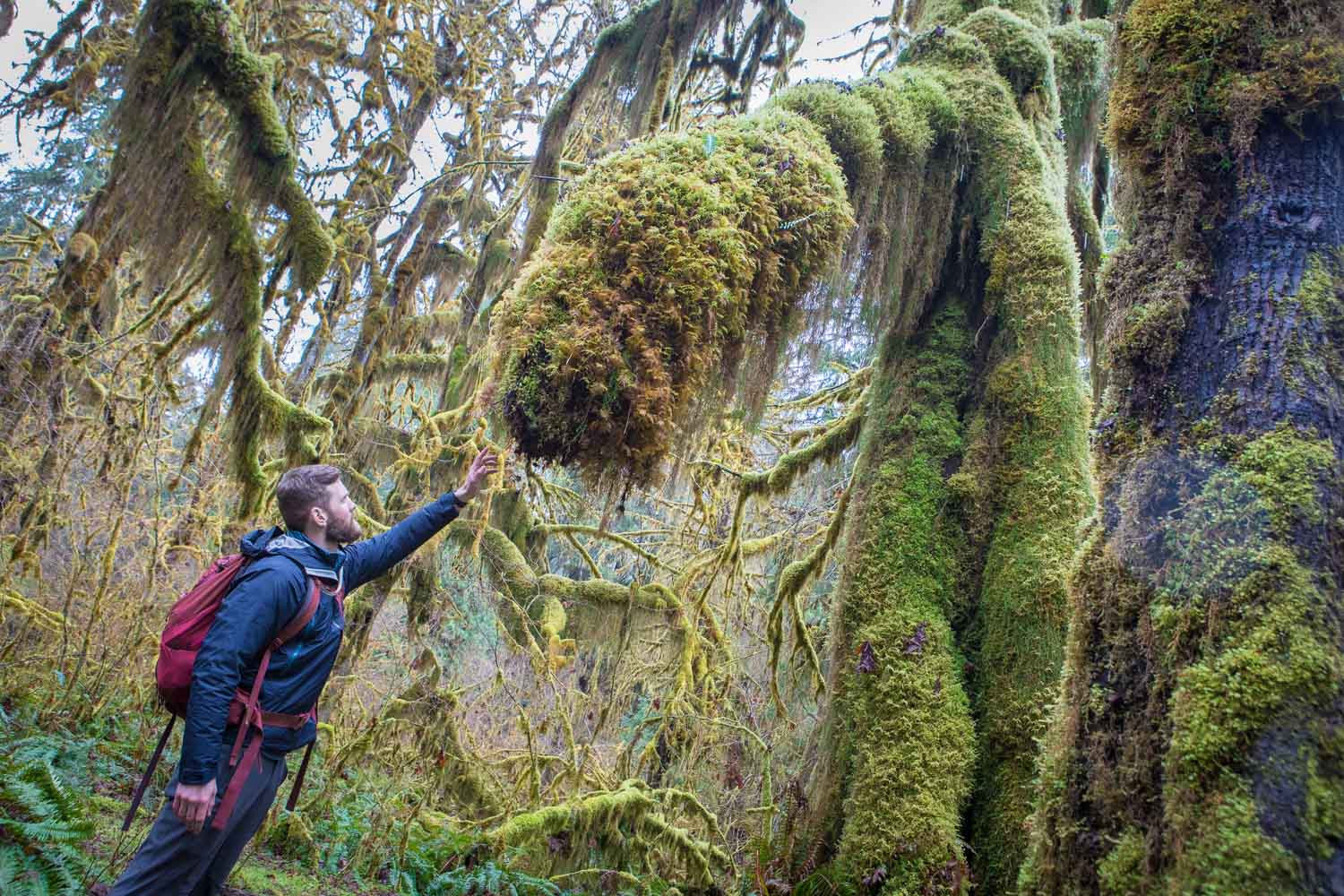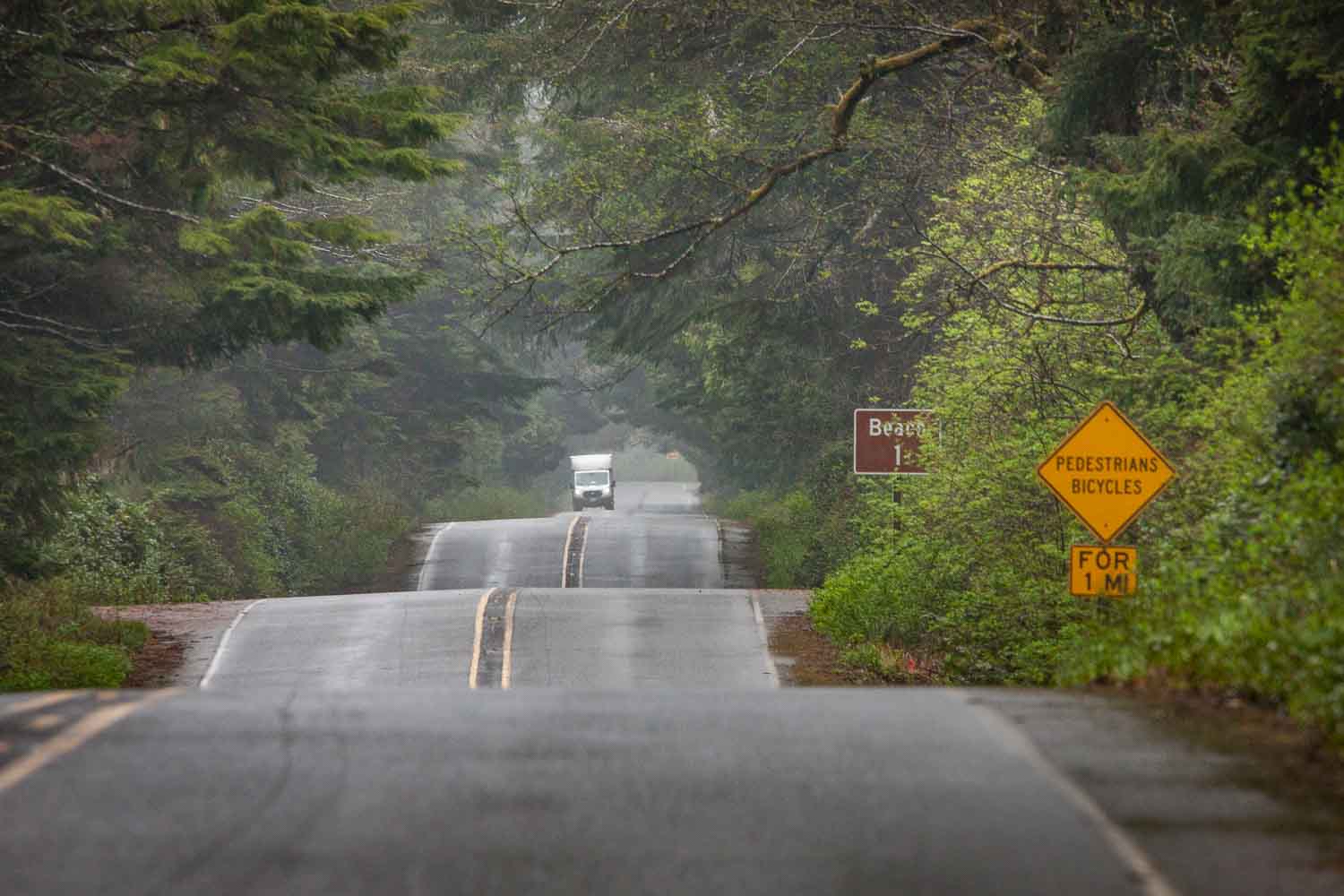Published in:

Germany’s biggest nature travel magazine
12 pages| text & photographs
Finnriver
“The fields and the bodies of water we farm are part of the traditional territories of the Chemakum and S’Klallam. They and other indigenous peoples practiced horticulture here and traded the produce. The land and its history, this legacy holds great significance for us at Finnriver.”
Andrew Byers is managing director and chief cider maker of Finnriver, an organic farm with orchard, cider manufacture and event venue. Alongside Andrew, 50 to 60 people work on 80 acres of organic fields here in the Chimacum Valley on the northern Olympic Peninsula in Washington State, depending on the season.
“We call it the revival of cider”
„Even though we’re pretty remote here in the Pacific Northwest, we’re honoured to be at the forefront of the organic movement. And especially at the, let’s call it, cider revival.”
Over ten different species of fruit trees grow here. Every year, 75 different varieties of apples are harvested. Some of these are processed as cider and end up in bottles on sale or in barrels in the Tap Room, the estate’s colourful taproom. Here the connoisseur has a choice of over 14 different sparkling ciders.
Four of the Finnriver team in the taproom: Maude Eisele, Mahala Duff, Andrew Byers and Kelsey Dressler.
Finnriver is a ‘US Certified B Corporation’, meaning they meet high standards of social and environmental attainment, transparency and accountability.
“One of Finnriver’s guiding principles is ‘reuse before recycling’.” Andrew explains, now pointing to a tin roof with many solar panels. “A lot of what you see up there as cover was previously standing around in storage buildings, barns or stables.”
The site with its Cider Garden, shop and pub looks to me like a lovingly assembled 3D collector’s book made up of many reused individual elements and exhibits. “There are people at work here who mean business. So much passion, so much energy.” This thought runs through me before Andrew invites me into the ‘Tap Room’: Finnriver’s taproom.
“Since we started farming in 2004, more branches have sprung up on the Finnriver family tree. Our farm grows organic apples and pears, processes them into ciders and fruit wines. We make these ourselves on the farm under my supervision. And you can taste some right here now.” Andrew grins. In the meantime we have arrived at the bar.
On such a strong vision, I need a cider first
While I study the cider selection, he continues: “Yes, and the Chimacum Valley Grainery produces organic grain. From that they make flour, pasta and bakery products. And Stellar J Farms plants organic fruits and vegetables.” Andrew pauses for a moment, looks out the window. “We want Finnriver to be a role model. A role model for being financially viable as a small organic farm with a cider plant.” He looks at me. “If we are financially viable, then we are not only securing livelihoods for our families, but also jobs in the region. We can show that our model makes it possible to foster community. A model that makes it possible to achieve a triple balance between people, planet and profit.”
On such a strong vision, I need a cider first. But which one? The ‘Cranberry Rosehip’, bright, tart with an herbaceous finish? Or the ‘Honey Meadow’, floral, earthy, semi-sweet nectar? I opt for the ‘Soltic Saffron’: gentle, bittersweet earthiness, balance with light anis.
Cheers, Andrew. Thank you, people of Finnriver. Good luck to you.
National Park Ranger Bill Baccus points a colleague in the direction of the weather measuring station we want to go to.
Hurricane Ridge
„Only one hour from sea level to ski level at 1,600 metres”, Bill Baccus, physical-scientific technician of the Olympic National Park, says happily and presses the accelerator of his Chevy. “You don’t see any snow yet, but in less than half an hour we’ll be on Hurricane Ridge, and it’ll be whizzing around our ears,” Bill promises me. The Hurricane Ridge Road we are on, opened in 1958, is empty of cars and people. Only at weekends is it open to the public. A large bird crosses the road at treetop height. “A bald eagle,” says Bill, “A sign that we are very close to the Pacific.”
Our destination, Hurricane Ridge, is a ridge in Olympic National Park, a popular destination for hiking, skiing or snowboarding and one of the two most visited places here, along with Hoh Rainforest.
The weather in the Olympic Mountains is unpredictable
“We can forget about a view of the Olympic Mountains in this weather,” Bill enlightens me. “Up there we have thick clouds and gale-force winds. Well, let’s see if we can get through to the weather station.”
At the top, I immediately understand where Hurricane Ridge got its name from: Strong winds whistle incessantly here. And today it is carrying snowflakes. They whip into my face in the headwind and feel like small biting ice cubes. The weather in the Olympic Mountains is unpredictable. As a visitor, you should be prepared for snow at any time of the year. 10 metres of it fall here every year. We strap on snowshoes and trudge off to the weather station. Bill wants to install a spare part there.
Not a good idea to lie down against the harsh winds of Hurricane Ridge without eye protection: The high speed turns snowflakes into small ice balls.
After only a few minutes of walking, we find ourselves in the lee of the Ridge. Suddenly everything is quiet. Bill and I look at the forests far below us. “Besides giant Thujas, common Douglas firs and Grand firs, you’ll find mostly Western hemlocks there. Up here, the Alaska Yellow Cedar still grows. But now, due to climate change and increasing temperatures at higher altitudes, the aforementioned trees are growing more and more here. And although you can’t see it now: We have less snow. And more rain.”
Bill knows what he’s talking about. He has worked for the National Park Authority for 35 years and is constantly confronted with the effects of climate change. “You can see climate change most clearly on the glaciers. The glaciers in Olympic National Park now have about 46% less ice surface than they did 35 years ago, with ice mass decreasing by about 25 to 30%. In the case of Blue Glacier, we know for sure. It has shrunk by 165 feet since 1988.”
Mountain goats climb over 450 metres in 20 minutes
It’s not only climate change that is affecting the national park. Sometimes it’s invasive species. On the drive back to the visitor centre, Bill tells me a story I find hard to believe. “We have some excellent climbers. They climb over 450 metres in 20 minutes. No, not humans. Mountain goats!”
Caution is advised in encounters with mountain goats, which are not native to this area. There are very few confirmed cases of mountain goats killing a hiker and even once a female grizzly bear. The goat’s pointed horns are said to have pierced the bear’s neck.
Ever since the animals were introduced in the 1920s, they have been a nuisance to the vegetation. And they seem to be strongly attracted to the salt found in human urine and sweat. This salt, he says, is not found elsewhere in nature and the goats need it to nourish their nerve cells. “They’re not up to anything bad,” Bill explains, “but they just want to get what they need. Isn’t that what we humans do?”
National Park Ranger Bill Baccus on his way to the weather measuring station.
To protect hikers and forests, they then had about 300 snow goats transported by helicopter to the North Cascades National Park. There they are native and have recently become rare.
Bad weather fronts, glacier melt, goat trouble – but Bill seems undaunted. “Olympic is unique with its diversity of ecosystems. From plus 20 to minus 5 degrees in an hour on Hurricane Ridge. I can ski, kayak the river and surf the ocean here in the same day. Where else can you do that?“
The success story of ecological restoration
Elwha River
MYSTR E’ is written on the number plate of John Gussman’s white van. It stands for ‘Mister E’, an abbreviation of ‘Mister Elwha’. Architect, documentary filmmaker and conservationist John Gussman is widely known by this name, at least since he made the award-winning film “Return of the River” about one of the largest dam removals in the USA.
John pulls two electric bikes out of his boot and soon we are cycling upstream, always within sight of the Elwha River. Not a soul in sight.
“The story of my film “The Return of the River” is a true story of hope in the midst of increasingly bleak environmental news” John tells us. “It the success story of ecological restoration. And an invitation to think about crazy ideas.“
The road along the Sol Duc River seems to be lined with a wall of red alder.
About 100 years ago, Port Angeles in the Elwha River estuary was a prosperous coastal city with a deep-water port. The only thing missing for economic growth was a reliable source of electricity. Entrepreneur Thomas Aldwell built two dams in the middle of the 72 km long Elwha River: Glines Canyon Dam and Elwha Dam. The cheap electricity supplied by hydropower spurred the growth of lumber mills and factories in Port Angeles.
But after decades of natural degradation and disrespect for culture, Klallam Indians and conservationists lobbied hard for dam removal. In 1992, Congress passed the Elwha River Ecosystem and Fisheries Restoration Act. That was the starting point for the restoration of the Elwha watershed.
And the beasts are weatherproof!
Meanwhile, John and I have arrived at the old campsite. “The Elwha River changes its course every now and then. Then it creates new branches of the river, like this one,” John points to the new stream directly in front of us. “It broke through the access road and washed away parts of the campsite.” Now I understand why we are almost alone in the open country.
This is ideal for wildlife watching. On a big leaf maple tree we spot a stellar’s jay, the heraldic bird of the Canadian province of British Columbia.
Two common merganser, belonging to the duck family, swim by. A american dipper searches for insects and fly larvae in the water, performing swimming and diving movements with its wings. “During the mass migrations of salmon, they like to feast on their spawn,” John teaches me. “Their beautiful song can last up to ten minutes, and their calls can be heard 1.5 kilometres away. And the beasts are weatherproof! At the Arctic Circle, american dippers have been observed at below minus 50 degrees.“
No cycle path for the inexperienced: with great skill and balance, environmentalist John Gussman dashes through large puddles. I prefer to push my bike around the outside.
Our path continues past red alders and large areas of yellow shining skunk cabbage. After barely half an hour of cycling, we stand at the spot where a 210-feet-high dam wall rose for 85 years.
“You might think it’s easy to remove a dam. But the dam had to be removed step by step, with many breaks. This was the only way the river could gradually release the sediment from the basin back into the river and rebuild the eroded shoreline at the river mouth,” I learn from John. You have to imagine that: this dam trapped 565 million cubic feet of sediment. Converted, that is the equivalent of a 1.85 mile high soccer field. If the dam had simply been blown away, large parts of the river would have been choked by an avalanche of sediment and mud. In addition, volunteers spent years removing invasive, i.e. non-native species, and also transplanted over 400,000 native plants to restore the original vegetation.
“In the long term, we expect 400,000 spawning salmon here”
„When the dam was still standing, the five species of Pacific salmon that live in the Elwha, including sockeye salmon, chinook salmon and the most abundant pink salmon, were cut off from 95% of their historic habitat. Only a few months after removal, they struggled back up the rapids to their original spawning grounds. In the long term, we expect 400,000 spawning salmon here. Their offspring will live in the river for up to two years, migrate to the ocean, and then return to the Elwha to continue the cycle.“
A Steller’s Jay near the Elwha River.
Rialto Beach
Jacqueline Laverdure, education and outreach coordinator for the Olympic Coast National Marine Sanctuary, kneels by a tide pool in a turquoise jacket, surrounded by barnacles, sea anemones and orange starfish. In the background, offshore rocky islands rise up from the waves.
Driving by, the coastlines of Olympic National Park always seemed quiet and lonely. Also constant rain and fog shrouded the rugged rocky beaches in a hazy veil, making them seem even more mysterious.
The ribbed limpet clings to rocks from which it grazes wet algae
Now, at half past seven in the morning, I follow Jaqueline in my sturdy hiking boots over barnacles and algae-covered rocks. The sea reveals these at low tide only.
When the water recedes, seawater collects here in the so-called tide zone in pools, niches and crevices in the rock surface. These tide pools are home to numerous colorful plants and mostly invertebrates.
In the splash zone, on the other hand, waves constantly crash against the rocks. This is where the periwinkle feels at home with its coiled shell. As does the ribbed limpet, which clings there to rocks from which it can graze moist algae.
Green giant anemones and a starfish called Pisaster ochraceus in a tide pool of Rialto Beach.
We move on carefully, trying with each stride not to step on the Pacific barnacles, leafy barnacles or mussels that are scattered over a large area. Again and again we stop to look into the countless ponds. With a bit of luck, we can spot green giant anemones, sea anemones and mussels, as well as bullheads, purple shore crabs, California crabs, decorator crabs or hermit crabs. Jaqueline draws my attention to a creature just 0.8 inch long: “Look, that’s a sea isopod. It actually likes to hide under rockweed. They’re very resilient, they’ve been found at depths of over 3000 feet.”
The ochre sea star reaches an age of up to 20 years
But my personal pond favorite is a starfish called ochre sea star . Its five arms can grow up to 10 inches long and have colorations ranging from pink to purple. While many other starfish live for about 4 years, ochre sea star can reach an age of up to 20 years.
Hoh Rainforest
While the farmland in northeastern Washington receives only 20 inches of rain annually, only 40 miles to the west 140 to 180 inches of precipitation fall in a dense, dripping jungle of ferns and giant spruces. This is because it is only there that saturated winds coming from the Pacific climb steep coastal slopes. The sudden altitude cools the air, causing it to condense and fall as snow or rain on peaks and forests.
The countless trees, almost completely covered in moss, in the many lonely rainforests of the Olympic National Park invite you to marvel and linger again and again.
The humidity has created a mystical magical world. Near Lake Quinault, in the “Valley of the Rain Forest Giants,” hiking trails lead to the ‘champions,’ the largest living specimens of their kind: Yellow cedar, western red cedar, sitka spruce, douglas fir, western hemlock and mountain hemlock grow here to record heights of up to 100 meters. Some of them are more than a 1,000 years old.
In the parking lot of the Hoh Rain Forest Visitor Center, I’m greeted by Tommy Farris, founder and executive director of Olympic Hiking Co. It’s raining. Tommy opens his palm and looks up at the sky: “Ten feet of rain falls here every year. That makes this place one of the wettest in the United States.“
On just one tree we find six to seven different mosses
I follow Tommy onto the ‘Hall of Mosses’ nature trail. After only a few yards, I’m amazed by giant trees overgrown with mosses and epiphytes. On the ground, ferns and shrubs form dense vegetation. “On just one tree we find six to seven different mosses. They live in a symbiotic community with the trees.” A white titmouse crosses the path, then I hear a peep followed by brief cooing. What bird is that, Tommy? “No, not a bird,” Tommy corrects with a smile, “a olympic chipmunk. It looks very cute. And now warns for predators. Or demarcates its territory.”
Nature fires the imagination: Tommy Farris appears to be approaching a giant ‘moss dog’.
Tommy shows me a lying, almost rotten tree trunk with three huge logs growing up from it. “This is a nurse log. When a big tree falls, it can serve as a nursery for new trees. Hemlocks and Sitka spruces often can’t draw enough nutrients from the forest floor. A nurse log provides them with minerals, moisture and warmth. But even there, competition is fierce. Few tree seedlings survive.“
I ask Tommy how he got the idea to become a tour operator. “It was while I was in college in Seattle. 9 out of 10 fellow students who wanted to be certified public accountants had never been to Olympic National Park. That made me curious. After just a few visits, my mind was made up: this is where I’m going to make my career.” And now, after many years and tours, doesn’t it get boring? Tommy smiles. After a brief pause for thought, he answers me, “The Olympic doesn’t surprise me anymore. But it still fascinates me.”
Probably the quietest place in the United States
After a few minutes of wandering, listening and silence, Tommy turns to me, “What only few people know: here in Hoh Rainforest, as part of the One Square Inch of Silence project, they found what is probably the quietest place in the United States. It is about 5 km from the Visitor’s Center. The exact location is marked by a small red stone on a mossy tree trunk.“
I think something like that is just admirable. Project initiator Gordon Hempton says, “Silence is part of our human nature. It can no longer be heard by most people. Refrigerators, air conditioners and traffic noise are ubiquitous ambient sounds. They prevent us from perceiving natural environmental sounds. When we listen to natural silence, we feel connected to the land, to the moment, and to ourselves. Silence is not the absence of something, silence is the presence of everything.
Not much happening on Highway 101, which runs past the 117 km of coastline that just 20,000 people call home.
Finale
On the return flight, I check the pictures on my mobile. With one I linger. It is the picture I took of an inscription I found at the Olympic National Park Visitor Center. It is attributed to the historic Chief Seattle. Its wording: “If all the beasts were gone, men would die from a great loneliness of spirit, for whatever happens to the beasts also happens to the man. All things are connected.“
Order here the TERRA Magazine:
Print and digital edition
Read now:
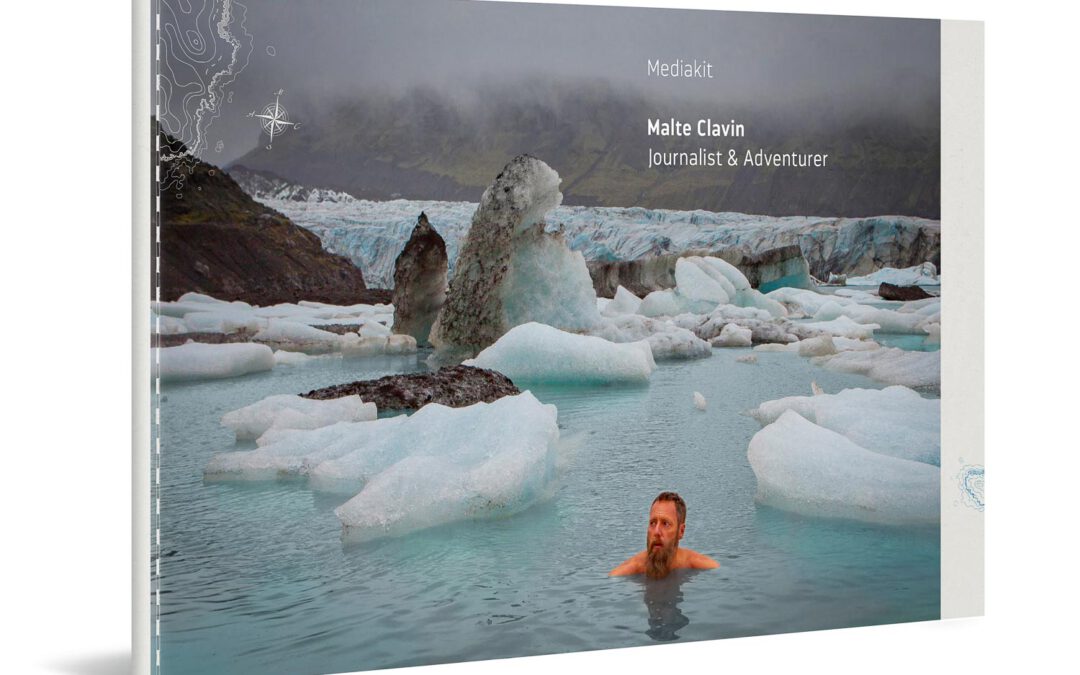
Pure inspiration
My new media kit 2025
< 1 Min.In this brand new 28-page media kit, I show you my work as an adventure journalist and speaker: Expeditions, travels, challenges – everything that excites me. Let yourself be inspired.
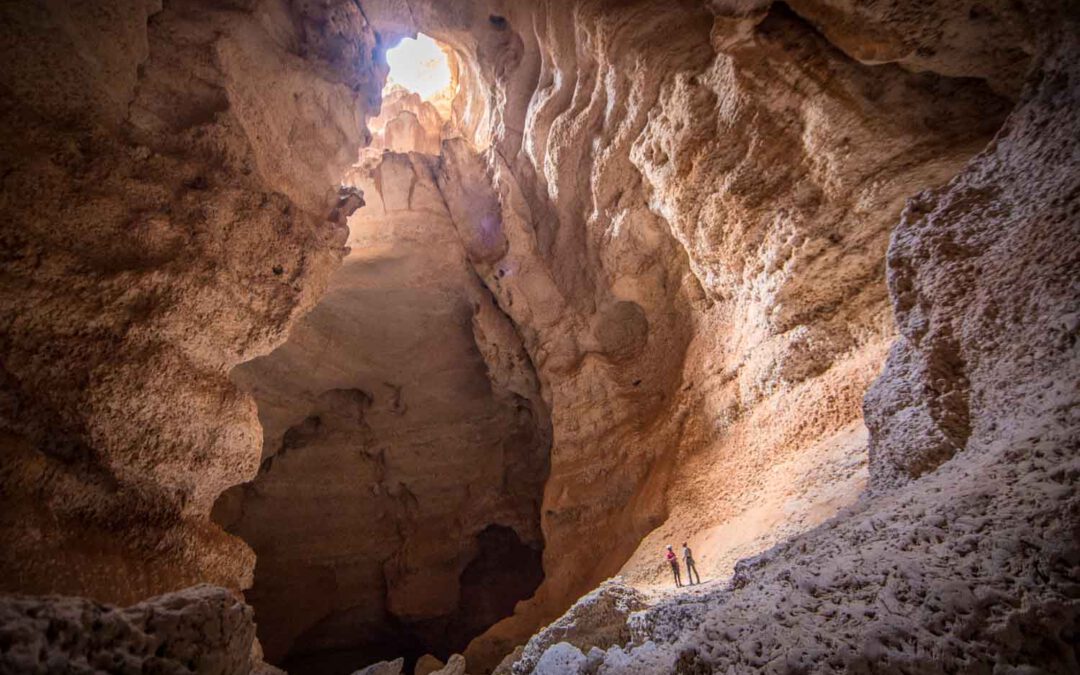
Unique insights into a desert country
Oman photo gallery
2 Min.Breathtaking desert landscapes, impressive mountain ranges, exuberant hospitality and delicious food. Oman offers it all. I ventured deep into the ‘interior’ – the 7th Hole cave on the Selmah Plateau is quite something.
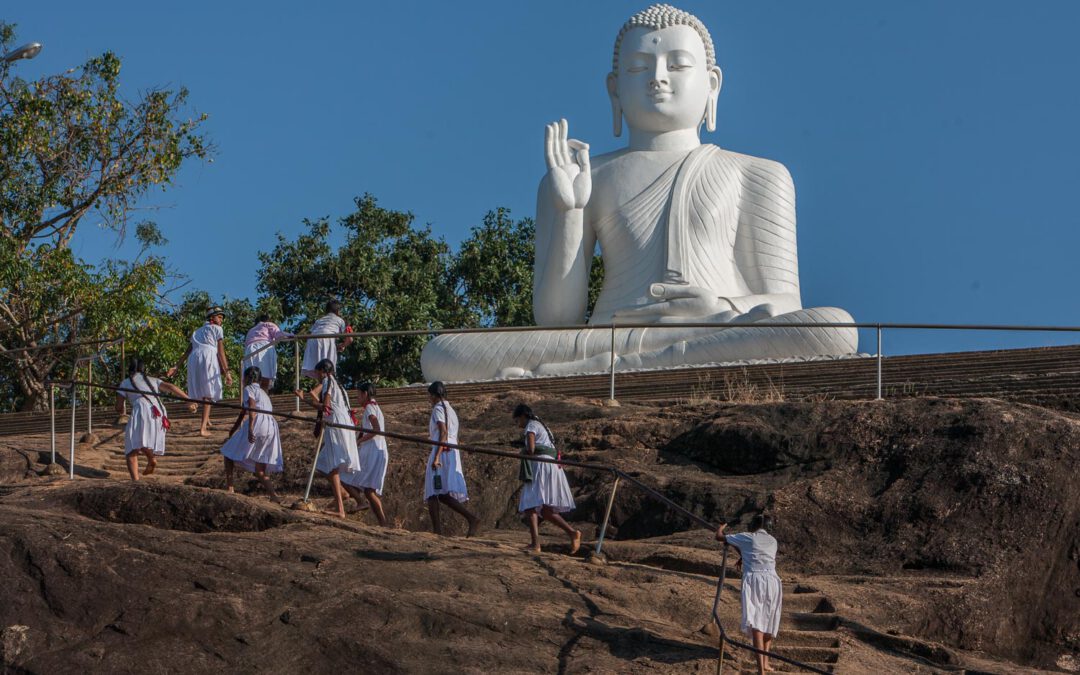
Long-term travel with kids
Family time in Sri Lanka
30 Min.Ancient royal cities, endless sandy beaches, luxuriant flowers and exotic animals – the name Sri Lanka justifiably means “shining land”. The island in the Indian Ocean was our dream destination. I spent five months in Sri Lanka with my wife Annette and our daughters Amelie and Smilla.

